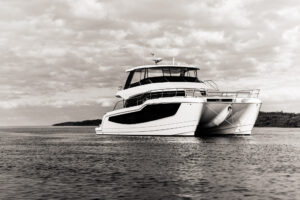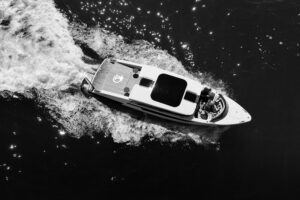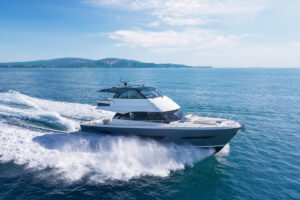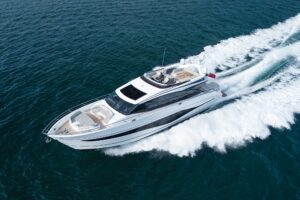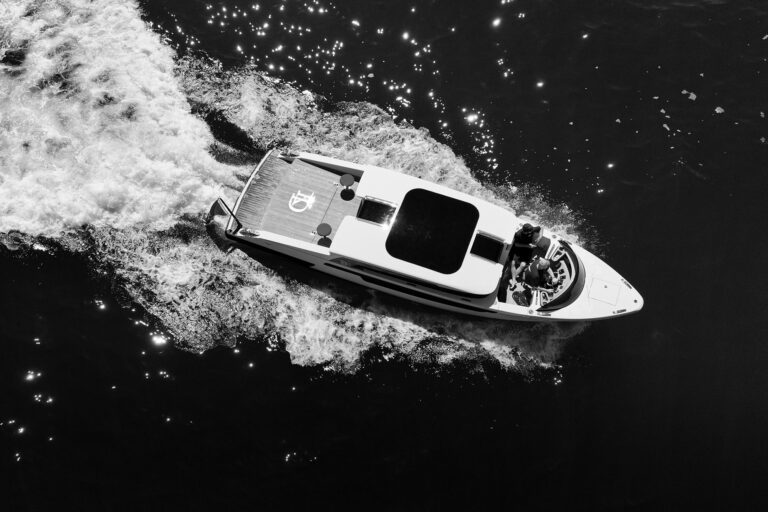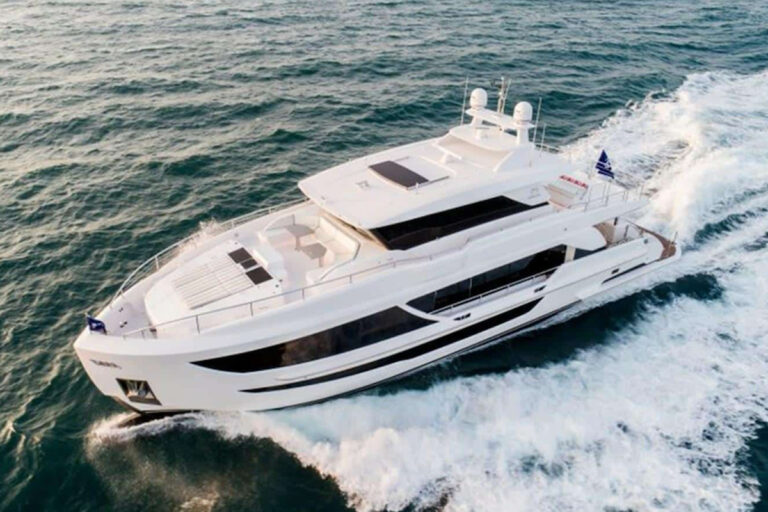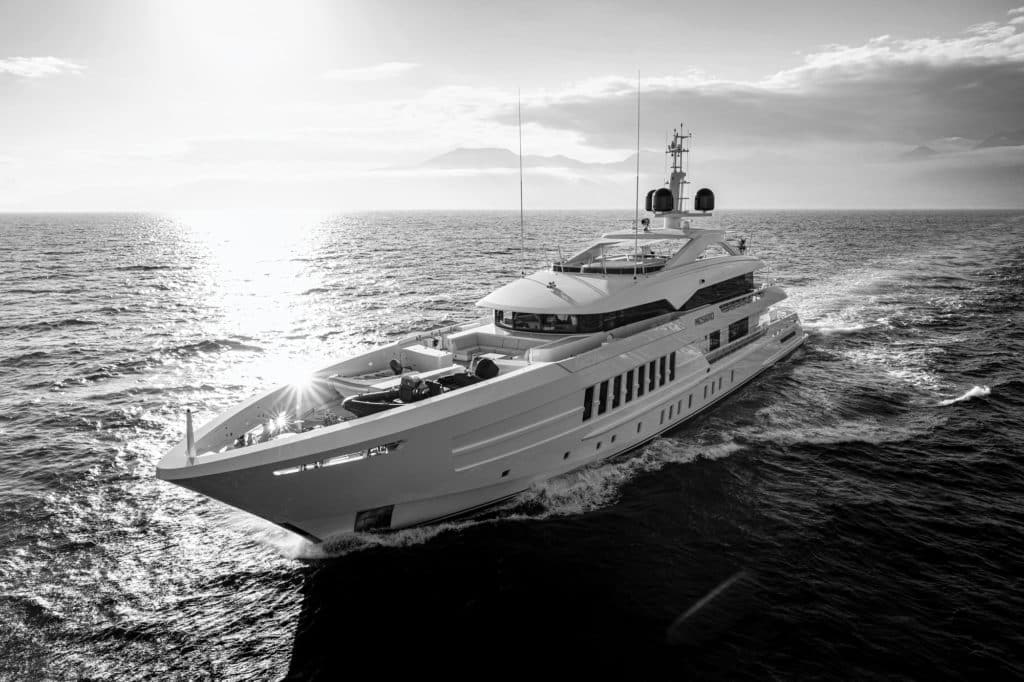
When you’re buying a yacht, and if you’re considering a spec project, a number of factors work in your favor. You get a proven engineering package, where sisterships back up claims of cruising speeds that make quick work of island-hopping, or economical speeds that make transatlantic crossings possible. You get a shorter delivery time than with a custom build. And you have the opportunity to put your own stamp on the interior design, even when the yacht is already many months into the construction process.
Every spec yacht on the water today bears all of these advantages. Each also bears some changes made between the time the owners bought the yachts and the time they took deliveries.
Except for the 180-foot Heesen Moskito.
Yes, the owner relied on performance data verified by similar deliveries. Heesen Yachts had already handed over four previous projects in its 55-meter Steel series. The yacht’s fast-displacement hull form from Van Oossanen Naval Architects and twin MTU engines promised a 15.5-knot maximum speed and a range of 4,500 nautical miles at 13 knots. The owner also enjoyed a shorter delivery time. He acquired the yacht in late 2020 and took delivery in April 2021.
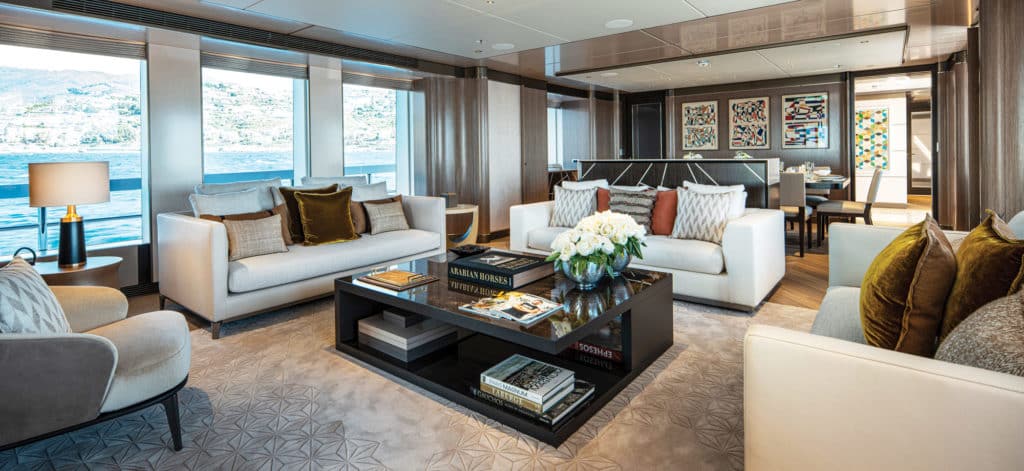
What makes Moskito an exception is that the owner didn’t change a thing about the superyacht. Not any of the systems, not any of the wall paneling, other materials, or even furnishings that Bannenberg & Rowell Design chose to give the yacht a distinctive touch—nothing.
“We wanted to take the breath away, without being aesthetically intimidating,” says Dickie Bannenberg, who runs the design studio with Simon Rowell. The interplay of design elements not commonly found on spec builds “instantly differentiates and enhances the feeling that, for a spec boat, this is really something with a lot of detail and quality and thought and expense.”
Treating a spec project this way can be risky, of course, but Heesen and the design firm had already created nearly a dozen spec yachts together.
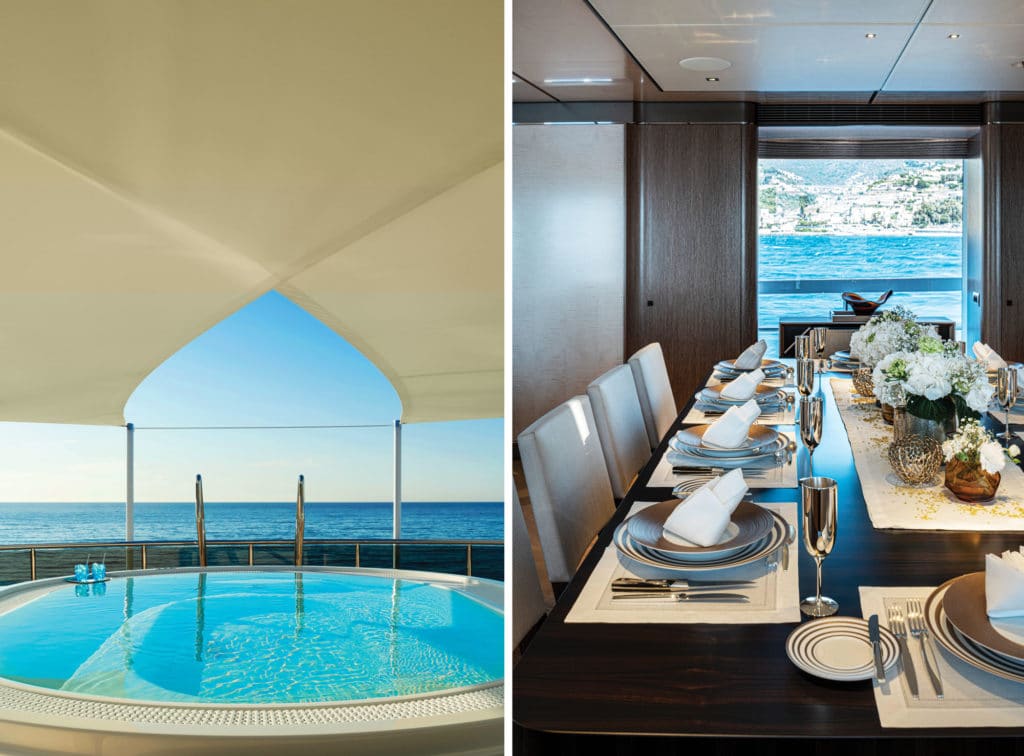
“They do give us very free rein,” Bannenberg says. “They’ve never said, ‘We want you to do something based around X, Y or Z.’ We call the shots creatively. … We are trying to be progressive and interesting and original but, at the same time, target audiences as wide as possible.”
The shipyard strives for its spec yachts to be progressive in configuration too. After every two yachts in a series, Heesen incorporates changes based on the feedback of owners, captains and charter guests. So, even though Moskito is the fifth launch in the 55-meter Steel series, only its immediate predecessor, Solemates—whose owner changed the Bannenberg & Rowell interior—has staterooms spread across three decks. The VIP stateroom is on the wheelhouse deck instead of belowdecks and is enlarged to span the yacht’s full beam. Four guest staterooms remain belowdecks, and the master stateroom—926 square feet—occupies the main deck forward.
Additionally, Moskito is the second in the series to have a volume of 760 gross tons, an increase of 20 gross tons.
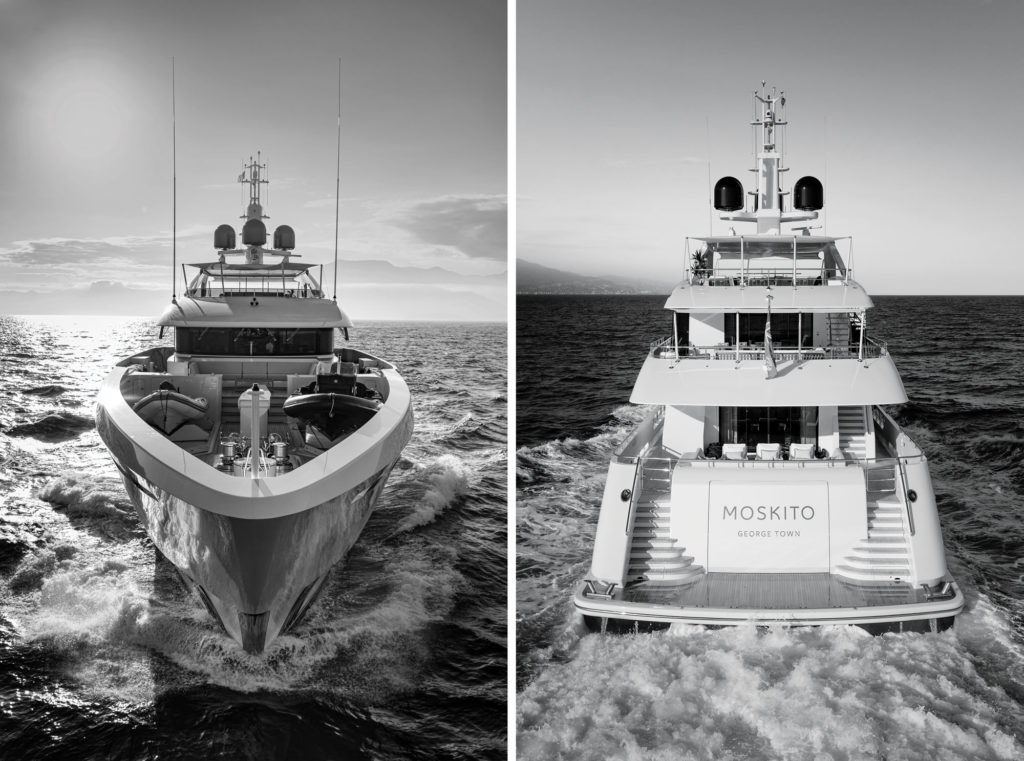
“In terms of creating an identity, each one is completely a one-off,” Bannenberg says of the studio’s approach to spec yachts. Aboard Moskito, there are contrasting rich eucalyptus and pale sycamore wood, for instance, with smoked-oak parquet soles in a chevron pattern.
“It really does hit that sweet spot of people looking for something fairly easygoing, by which I mean you can sit there not perched on the front of the sofa,” Bannenberg says. “You’re pretty happy kicking back with polo shirts and shorts, but at the same time, if you want to live a smarter or more dressy life, it’s good for that too.”
Moskito also has more than a few gentle curves amid its walls. Take the master stateroom, for instance. Though guests pass through a foyer to get to the sleeping area, it’s not until they really look at the wall behind the bed and then at the wall in the foyer that they realize they’re arcs. For shipyards building on spec, it’s much easier and less expensive to manufacture straight lines. Heesen has its own interiors department, allowing for this kind of design element.
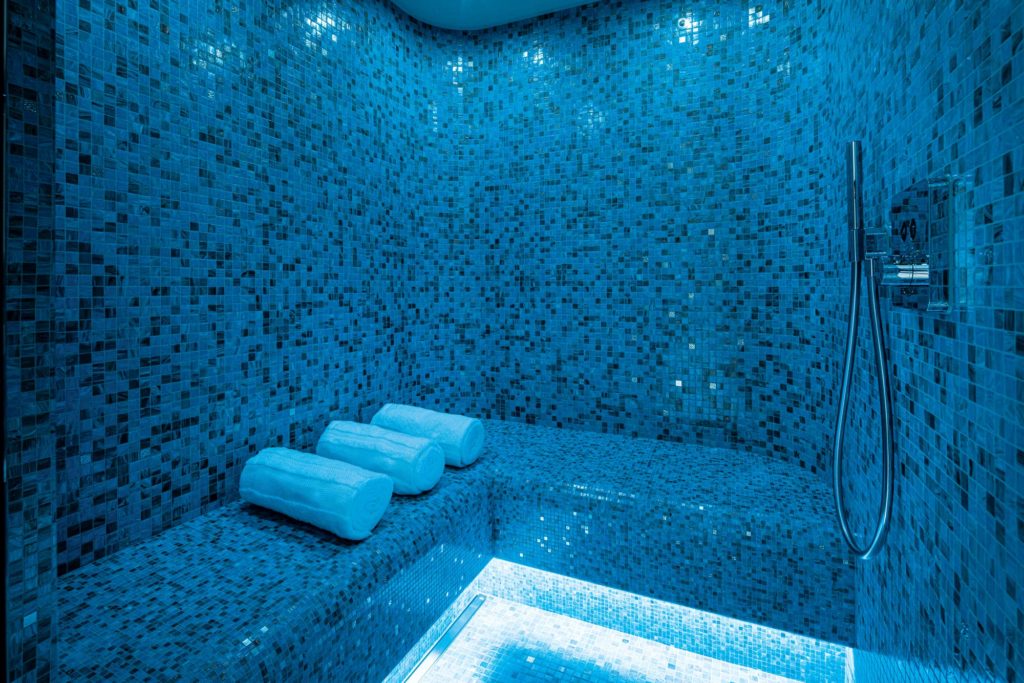
Not only did the owner buy Moskito without changing a thing, but he also bought the superyacht sight unseen. He saw the yacht for the first time when boarding it in Malta upon delivery, having signed off on everything remotely. This included giving Bannenberg & Rowell carte blanche to select books and a few accessories to round out the overall design.
“We’ve had projects where people have said, ‘Select some art,’ or ‘Make some proposals,’ and we’ve put things together, and it doesn’t hit the spot,” Bannenberg says. “So it can cut both ways. In this particular case, I think we really did choose things to complement the overall vibe on board.”
It’s good to see that an exception can be exceptional.
Heesen’s Home
While several superyacht shipyards are in the Netherlands, Heesen’s home city of Oss sits 93 miles inland, closer to the land border with Germany than to the North Sea. A series of canals and rivers connects it to the sea.
Fantasy vs. Friendly
With spec projects, Bannenberg & Rowell Design envisions real-world scenarios. “We do like to think of the lifestyle—the family with two or three kids, or charters—and have things made practical,” Dickie Bannenberg says. “It’s not just a sort of homage to sharp design; it’s something very livable and comfortable.”
Here Comes the Sun
Alfresco areas are among the most popular places to be on board a yacht. Moskito’s outdoor spaces add up to nearly 2,700 square feet. Much of this is on the sun deck, which has a pool, a bar, and seating and sunbathing areas that are usable underway or at anchor.
The Hull Story
According to Van Oossanen, its fast-displacement hull form “reduces resistance values by 20 percent” when compared to “hard-chine hulls at semidisplacement speeds.”
Take the next step: heesenyachts.com

